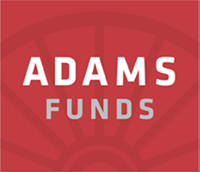April 22, 2022
By Mark Stoeckle
When the Federal Reserve Board voted to raise short-term interest rates at its March meeting, it indicated that it may continue to push rates higher, possibly six more times, this year, including at its upcoming meeting that concludes on May 4. If they do so, this would mark the first series of rate hikes since 2015.
A return to more rational thinking and a greater focus on fundamentals wouldn’t be such a bad thing.

For savers and individual investors, is this really such a big deal? The short answer is yes, as interest rates affect virtually every facet of your financial life from borrowing to saving to investing. Interest rates also shape the backdrop for the financial markets and economy going forward.
Here are five basic ways that rate hikes can affect your everyday life:
1. Rising rates affect the economy.
When necessary, the Federal Reserve raises or lowers short-term interest rates to try to slow down or speed up the economy. The Fed, which is the nation’s central bank, is tasked with two main duties: to establish monetary policy that maintains maximum employment and stable prices in the U.S. economy. Obviously, we haven’t had stable prices lately. In February, the Consumer Price Index, which measures price changes of a representative basket of consumer goods and services, rose 8.5%, marking the fastest pace of inflation in more than 40 years.
As inflation is typically an outgrowth of an overheating economy, the Fed often turns to one of the biggest arrows in its quiver — its power to set short-term interest rates — in times like this to tap the brakes on the economy. By raising rates, the Fed is attempting to make it more expensive for businesses to invest and households to consume. The hope is this will cool the outsized demand for goods and services which began to materialize in the aftermath of the 2020 Covid shutdowns, potentially tamping down inflation.
2. Rising rates affect your ability to borrow.
It’s important to understand the Fed does not directly set the rates you’re assessed on bank loans, mortgages, or other forms of debt. The Fed only controls specific short-term interest rates, and the rate the Fed lifted in March is the one banks charge one another on overnight loans.
However, this rate — the so-called Federal Funds rate — influences other market interest rates, including the yield on 10-year U.S. Treasury notes, which in turn influences what you can expect to pay on everything from auto loans to home mortgages to student loans. The mere threat of rate hikes has already begun to move the needle: Since Dec. 15, when Fed chairman Jerome Powell began telegraphing the Fed’s intent to raise short-term rates, the yield on 10-Year Treasuries has risen from 1.44% up to 2.93% as of April 19.
Those rising 10-year yields are already influencing household borrowing costs. For example, the average 30-year home mortgage has climbed from 3.05% in December to 5.11% as of mid-April, slowing the pace of home sales. The Commerce Department reported a 2% decline in new home sales in February versus January and a 6.2% decline from February 2021. Rates on variable-rate loans, such as auto and home equity loans, are expected to be the next to climb now that the Fed has begun to raise rates.
3. Rising rates affect your savings.
Americans have grown used to near-zero yields on short-term savings accounts after more than a decade of record-low interest rates. At the end of last year, for instance, savers were earning a mere 0.06% on their savings accounts, 0.03% on interest-bearing checking accounts, and 0.07% on a money market account. This dearth of yields is one reason why investors have been willing to take greater risks in the stock market.
But savings rates are already starting to rise, with 3-month Treasury bills paying 0.82% as of April 19, up from 0.06% at the start of the year. How high could yields on cash and savings accounts go? It will depend on how aggressively the Fed continues to raise rates. During the last rate-hike cycle, from Dec. 2015 to Dec. 2018, the Fed lifted rates 9 times. Back then, 3-month T-bill yields, which are a proxy for cash accounts, climbed from 0.2% up to as high as 2.4%.
4. Rising rates can affect the stock market.
Rising rates aren’t necessarily bad news for stocks. During the last series of Fed rate hikes, from Dec. 2015 through Dec. 2018, the S&P 500 index of large U.S. stocks actually gained nearly 30%.
That said, rising rates add to a company’s borrowing costs, which can weigh on corporate earnings. When you buy stocks, you’re buying a future stream of expected profits from that company, and if rising borrowing costs crimp those profits, investors won’t be as likely to pay up for stocks. This can be seen in the traditionally inverse relationship between interest rates and how much investors are willing to pay for stocks.
5. Rising rates can affect the mood of investors.
One of the reasons why stocks have performed so well in recent years, despite all the economic anxieties surrounding the global pandemic, is investors have had few opportunities in bonds or cash due to historically low interest rates. This may be about to change.
While it’s always difficult to predict with certainty which investments will outperform in any given year, one thing is certain: the rampant risk-taking that has taken place in recent years thanks to “cheap money” is likely to be revisited if the Fed follows through and raises rates several more times this year. This could focus attention on cash and bonds, but it could also shine a spotlight on areas of the stock market that have been overlooked in recent years. A return to more rational thinking and a greater focus on the fundamentals wouldn’t be such a bad thing.
